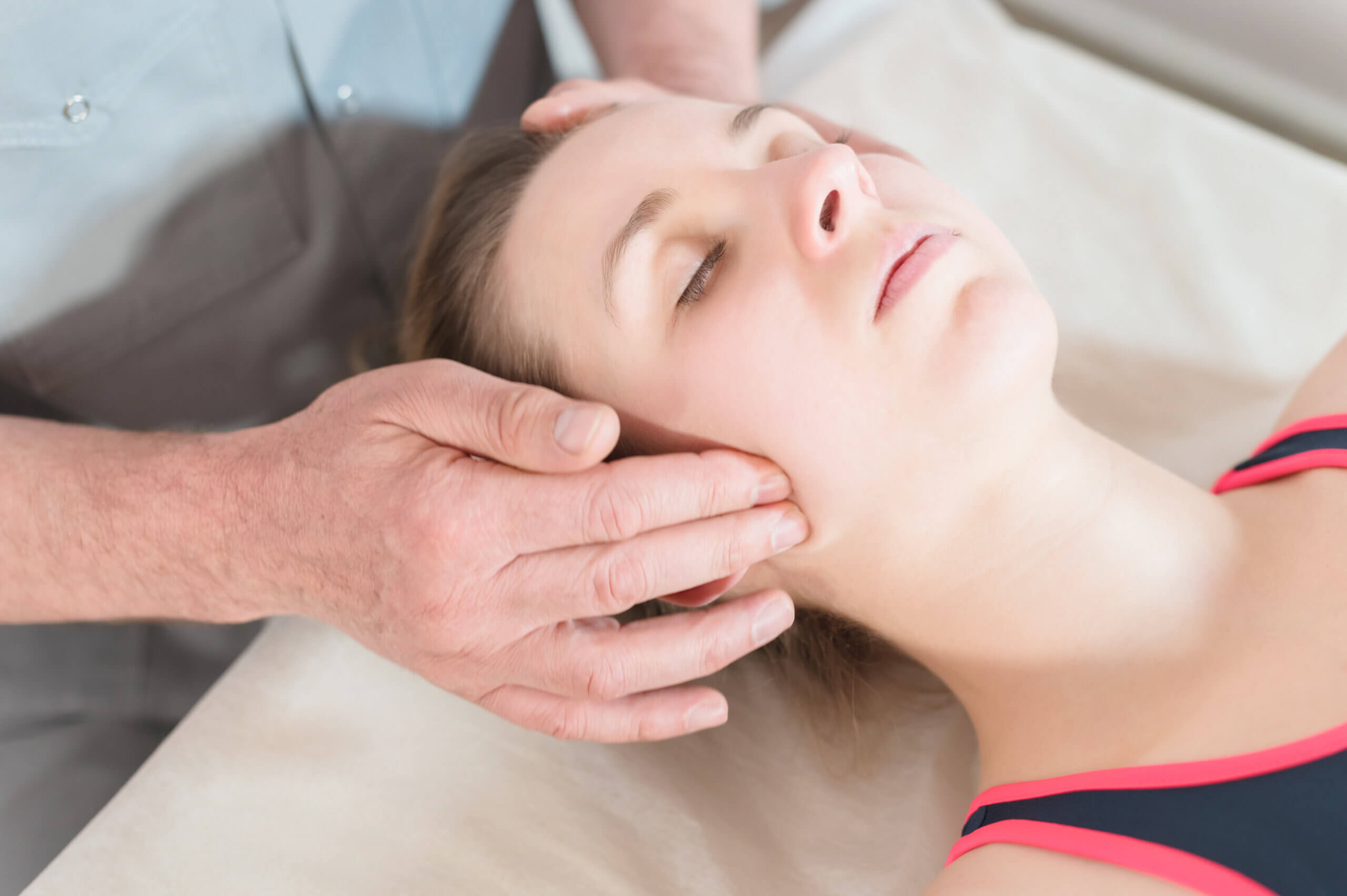Experiencing pain in and around your jaw? This could be caused by a dysfunction in your temporomandibular joint, or TMJ. Connecting your skull and jaw, this joint plays a crucial role in many activities such as speaking and eating. The joint is also important for making facial expressions. When something goes wrong, you might experience localized pain and stiffness around the jaw. TMJ dysfunction can make motion painful — it might hurt to open your mouth or smile. To receive effective treatment, receiving an accurate diagnosis is important. There are a range of common TMJ dysfunctions. A physical therapist can help you learn more about your condition and offer treatment strategies that address your dysfunction. To prepare for treatment, learning about some potential causes of your symptoms can be helpful.
Common types of TMJ dysfunction you can address with physical therapy
- Arthralgia — Arthralgia refers to pain in the joints. Arthralgia is a symptom that can occur throughout the body and is typically associated with conditions like TMJ dysfunction. While TMJ dysfunction sometimes causes pain mainly in surrounding tissue, arthralgia affects the joint directly. Physical therapy can help address TMJ arthralgia through a variety of techniques. These include manual therapy and targeted exercises. These treatments can be a great way to alleviate your pain and work toward long-term relief.
- Myalgia — Myalgia is a term for muscle pain. When you experience TMJ dysfunction, it can have effects on other connected parts of the body. The jaw muscles, for example, may undergo excess strain. You may also experience neck pain as a result of TMJ dysfunction. There are many physical therapy techniques that focus on relieving muscle pain. These include myofascial release, a kind of manual therapy designed to relieve muscle tightness. If your TMJ dysfunction is caused by an injury, physical therapy can help promote healing in injured muscle tissue.
- Osteoarthritis — Degeneration of the joints around the jaw can lead to a range of health conditions. Degenerative joint disease, commonly known as osteoarthritis, involves stiffness and irritation in the joints caused by cartilage breakdown. More than other kinds of arthritis, osteoarthritis often affects the jaw. This makes TMJ dysfunction a common symptom of osteoarthritis in the jaw region. Specialized physical therapy pain management strategies can help you manage TMJ pain caused by arthritis.
- Myofascial pain — TMJ pain does not always start at the joint. In some cases, TMJ dysfunction is a symptom of conditions affecting other areas of the body. Referred myofascial pain is one example. This occurs when trigger points (or knots) in the muscles cause pain in other regions. The tightness of a muscle knot can tug on other muscle tissue and joints, leading to pain in those areas. If you have myofascial pain in the muscles used for chewing, it can cause TMJ pain. A physical therapist can address this pain by releasing your trigger points with special techniques.
- Disc disorders — Have you recently experienced a disc injury or disorder? Abnormal jaw movement can cause displacement of the articular disc in the jaw. Not to be confused with the spinal discs, an articular disc is a thin layer of cartilage in a joint. An articular disc works to stabilize a joint and maintain range of motion. The displacement of one of these discs can lead to TMJ pain. Physical therapy can help through guided jaw exercises and preventive education.
- TMJ headaches — If you often experience tension headaches or migraines, TMJ dysfunction could be the cause. TMJ-associated headaches can persist for extended periods and cause major discomfort. To find relief, you can utilize physical therapy techniques for addressing TMJ. One method that can be effective for relieving headaches is postural training. Learning how to improve your posture can help prevent postural issues that contribute to headaches. Your physical therapist can also recommend ergonomic tools and practices that reduce strain on your neck and jaw. By reducing tension in your jaw, you can alleviate TMJ pain.
Find expert help addressing your TMJ dysfunction at Advent Physical Therapy
TMJ dysfunction can have a significant impact on your quality of life. If you are ready to take the next step and receive treatment, physical therapy can be an excellent choice. Advent Physical Therapy has a range of treatment options designed to address your TMJ dysfunction. As a large and comprehensive physical therapy provider, we offer many innovative evidence-based clinical services. After a free screening, we can work with you to develop a unique treatment plan. Our team is dedicated to providing effective treatment tailored to each patient’s needs and priorities.
Contact our team today for more information or to schedule an initial appointment.

